10 Bugs That Look Like Bed Bugs, But Definitely Aren't
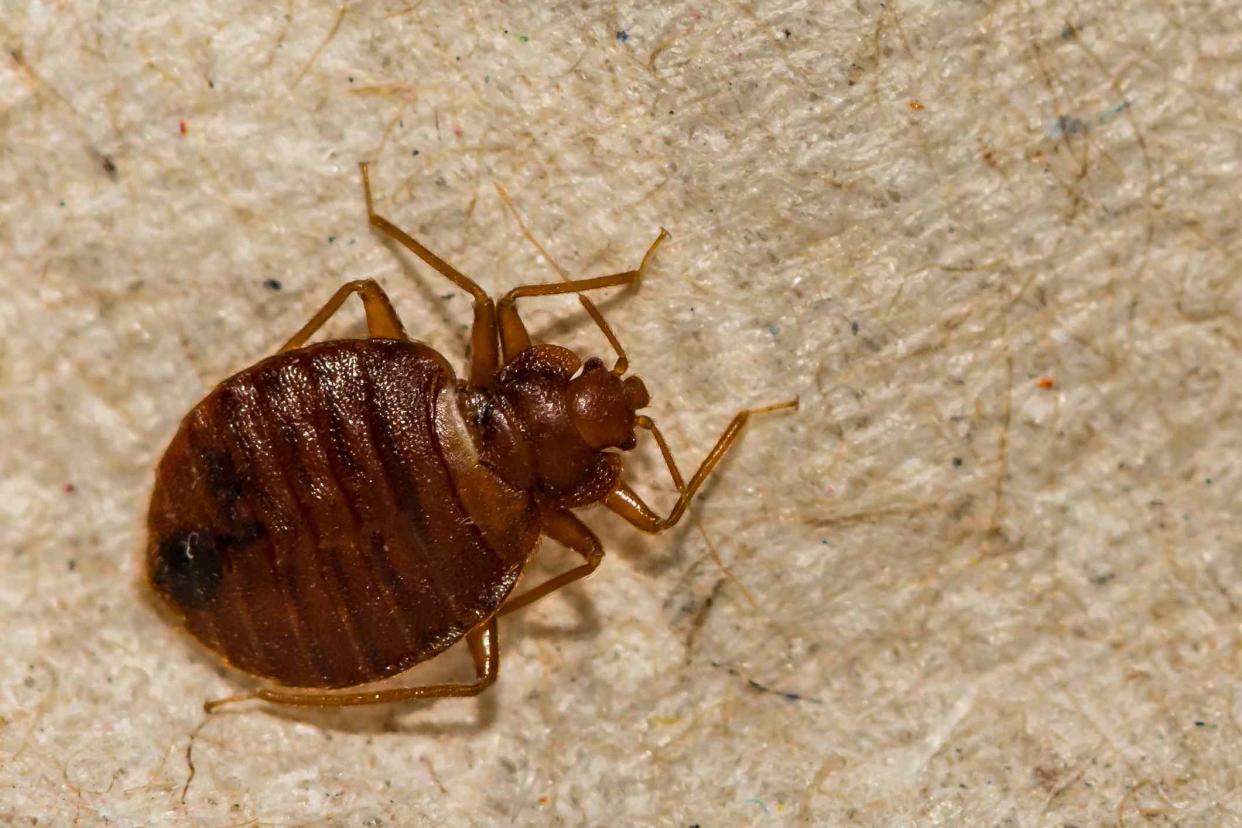
JasonOndreicka / Getty Images
Bed bugs aren’t the easiest to identify. They mostly hide during the day and come out at night like many other pests. Plus, their bites can take several days to show up and often look like those of fleas and mosquitos.
Further complicating things, there are a handful of small bugs that closely resemble bed bugs yet each one should be managed differently.
So, how do you know if the intruder is actually a bed bug? Below, we’ve listed 10 bugs that look like bed bugs and included their key differences to help you differentiate them.
How To Identify Bed Bugs
Appearance
Bed bugs have six legs, two antennae, and are are wingless, although they have wingpads. Their eyes are very sensitive as they are made up of many repeating segments called ommatidia. Their heads are short and broad and attached to the thorax. To feed, they use a small tube called a proboscis. Their abdomen is segmented, allowing it to expand after feeding.
Visually, adult bed bugs have a rusty brown, oval body—somewhat resembling a flattened apple seed. They’re visible to the naked eye and typically range from 3/16 to ¼ inches in length.
Conversely, immature bed bugs (or nymphs) are smaller, translucent or whitish-yellow in color and can be as small as 1.5 mm, sometimes almost invisible when on an empty stomach.
Once fed, these insects inflate like a balloon and turn reddish-brown.
Movement pattern
Bed bugs can neither fly nor jump, but their crawling skills make up for it. They can crawl across ceilings, climb along walls, and even scale bed frames to reach their favorite feeding ground: the mattress.
Where they can be found
Bed bugs can be found in bedding (pillows, sheets, and blankets), in the folds and seams of your mattress, as well as in the gaps of your bed frame.
They can also be found inside upholstered chairs, sofas, under furniture, and behind items you haven't cleaned in a while such as picture frames, light switch covers, headboards, and wall voids. Bsically, anywhere dark, protected, and close to their human host.
Other signs of infestation
You'll notice a bed bug infestation by finding dark brown to black speckled spots that resemble blood and droppings, reddish smears, pale yellow discarded skins, and pearl-colored eggs, as well as the bugs themselves.
Tips
If you've seen bugs in your home that look like bedbugs but you're unsure, consider where you found the bug and what could be attracting them to help differentiate between different bugs.
If none of these identification tips apply, here are 10 other options for what bugs may be in your home.
Fleas

Pat Gaines / Getty Images
Fleas are likely what will cause your pet to scratch, but they can be found in homes, too.
Appearance: Both of these parasitic pests are tiny, wingless, oval-shaped, and similar in color.
Key distinction: Fleas are flattened from side to side rather than top to bottom. They have large and long back legs that they use for jumping, while bed bug legs are thin and generally no longer than their bodies.
Habits: Jump from host to host
Found in: Characteristically, fleas are more likely to reside in pets but often inhabit household furnishings, too. They prefer moist, humid, shady areas.
Booklice
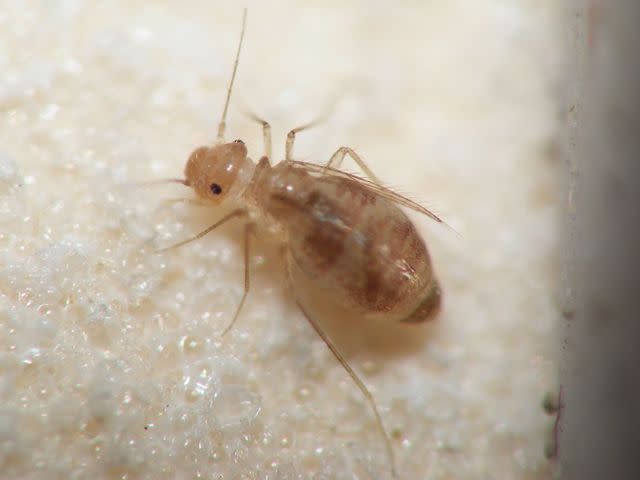
Arp / Wikimedia Commons / Creative Commons Zero (CC0)
Booklice are small insects that get their name from their love of humid books.
Appearance: These pests are also flat and white-grayish/yellowish, which makes them easy to confuse with bed bug nymphs.
Key distinction: Booklice have wings and bigger heads compared to bed bugs.
Habits: Booklice prefer mold and fungi.
Found in: Books and paper goods in a humid environment.
Spider Beetle

Katja Schulz / Wikimedia Commons / CC-BY-2.0
Spider beetles are often mistaken for engorged bed bugs due to their tiny size and dark reddish-brown coloring.
Appearance: Spider beetles look like spiders—they have long legs and a bulbous abdomen.
Key distinction: Bed bugs are flatter, less shiny, and slightly larger by a few millimeters compared to spider beetles.
Habits: Spider beetles feeding on anything plant and animal-related, from carcasses to feathers to cereals.
Found in: Known scavengers, spider beetles can be found in large spaces such as pantries, mills, warehouses, and attics.
Ticks
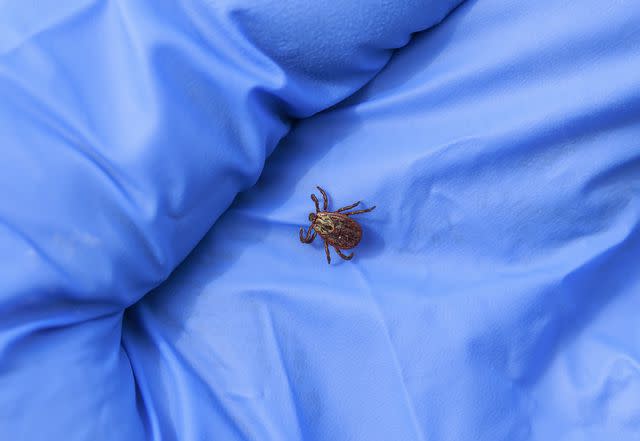
Nataba / Getty Images
When you think of ticks, you think of finding them in outdoor wooded areas or on your dog, but they can enter your home and resemble bed bugs, too.
Appearance: Reddish to dark brown color and flat in appearance
Key distinction: Firstly, ticks aren’t insects, but arachnids. As arachnids, they have eight legs, while bed bugs possess six. Moreover, their bodies become lighter in color after a blood meal, in contrast to bed bugs that get darker. Another noticeable difference is their dorsal shield—the hard plate on their top side. Those on ticks have varied markings while bed bugs appear to have horizontal stripes.
Habits: Ticks feeds at night and don't spend too much time attached to their host.
Found in: Ticks can be found in grassy, wooded areas ut can easily be brought into your home. Keep an eye out for ticks where your dog sleeps. They can also be found crawling up walls or hiding in cracks and crevices near baseboards.
Carpet Beetles
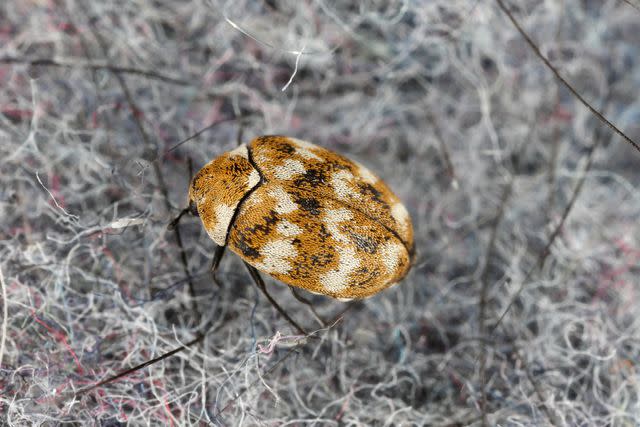
Tomasz Klejdysz / Getty Images
True to their name, carpet beetles are particularly fond of carpets and fabric.
Appearance: While oval-shaped like bed bugs, these household pests are a bit smaller—adults are usually 1/16 to 1/8 inches long.
Key distinction: Carpet beetles feature wings and speckled patterns of white, yellow, brown, and orange on their bodies. Others can be fully black, too.
Habits: Carpet beetles don’t bite and are mainly active in the daytime.
Found in: Carpets and fabric materials, such as wool, silk, and leather.
Bat Bugs
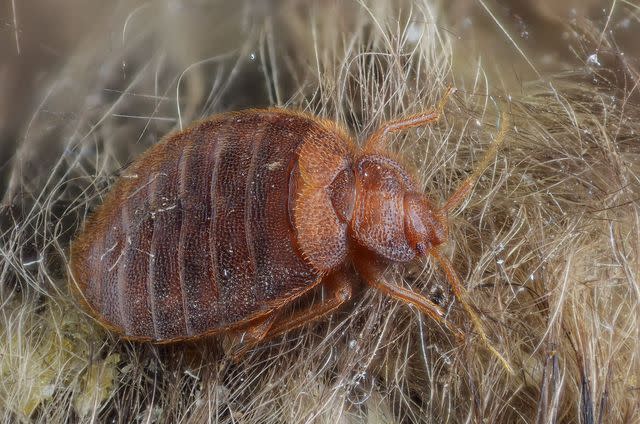
Gilles San Martin / Wikimedia Commons / CC-BY-SA-2.0
Bat bugs and bed bugs look identical to the naked eye, primarily because they’re related to each other.
Appearance: Bat bugs are the same size, shape, and color as bed bugs. For this reason, you’ll need a microscope to differentiate the two.
Key distinction: A hairy body with hairs longer than the width of its eye, chances are it’s a bat bug. Bed bugs, on the other hand, have very short, trimmed hairs.
Habits: Bat bugs remain close to bats and only wander elsewhere when abandoned by their host. They cannot survive on human blood.
Found in: Bat bugs are only found where there are bats, so check your house to see if a bat is roosting in your attic or backyard.
Swallow Bugs
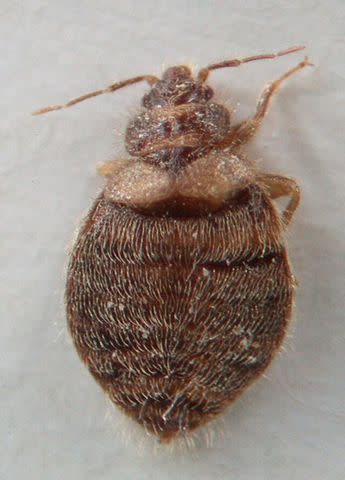
Dona Hilkey / Flickr / CC0 1.0
Swallow bugs are also a member of the bed bug family, but develop on nesting swallows instead of beds.
Appearance: Swallow bugs are also extremely similar to bed bugs in color, shape, and size and must be observed under magnification to tell them apart from bed bugs.
Key distinction: Swallow bugs boast long, fine hairs all over their bodies. You can also distinguish them from other insects by their antennae, as their last two antennal segments are the same length.
Habits: Swallow bugs do bite humans and can migrate indoors after swallow birds leave their nests and the bugs have nowhere else to go.
Found in: Found anywhere there are nesting cliff swallows, as well as barns.
Head Lice
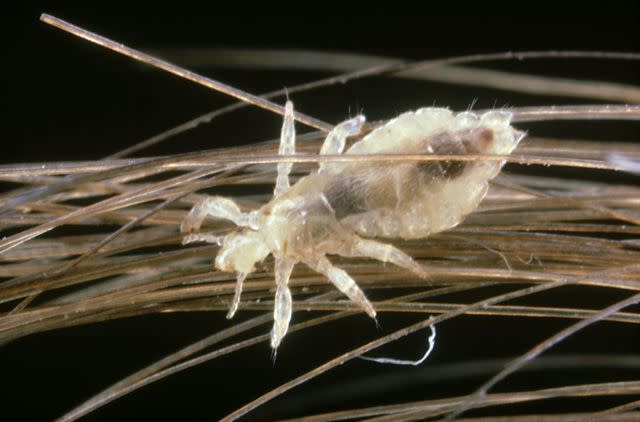
Oxford Scientific / Getty Images
Small and six-legged, head lice are sometimes mixed up with bed bugs when found on pillows and bed sheets.
Appearance: These parasites are only about an eighth of an inch (roughly as small as a sesame seed) and are more oblong—not to mention, they have sharp claws at the end of each leg
Key distinction: Coloration is a distinguishing factor since they tend to range from tan to grayish-white.
Habits: Lice cannot hop or fly and move by crawling.
Found in: Head lice are mainly found in the scalp, behind the ears, and near the neckline at the back of the head.
Baby Cockroaches
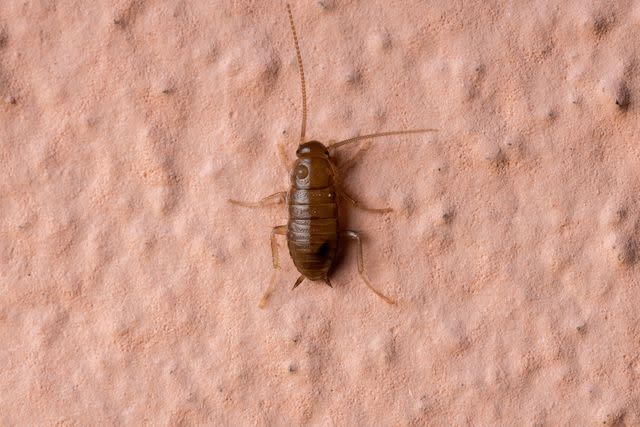
ViniSouza128 / Getty Images
Baby roaches and bed bugs can have pretty similar characteristics to the untrained eye.
Appearance: Similar to bed bugs, baby cockroaches have flattened shells and are wingless, brown, and nocturnal.
Key distinction: Cockroach nymphs have relatively long antennae, spines on their legs, and tail-like structures (called cerci) at the end of their bodies.
Habits: Although they cannot fly, baby cockroaches get around by crawling up pips and picking up harmful bacteria.
Found in: Baby cockroaches prefer warm, damp, dark areas that are undisturbed, such as under kitchen sinks, around pipes, and behind appliances.
Oribatid Mites
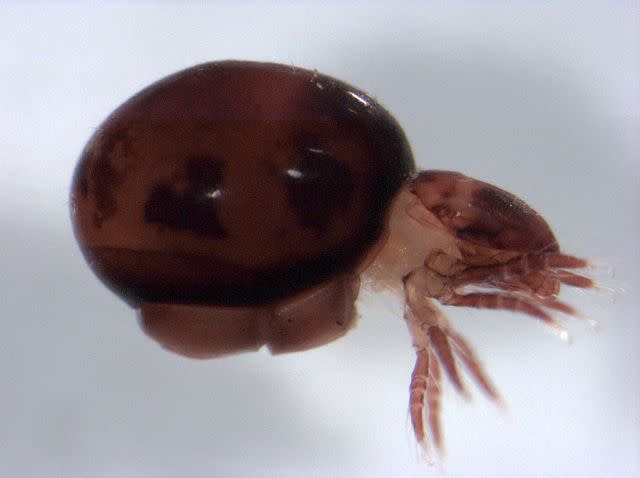
S.E. Thorpe / Wikimedia Commons / CC0 1.0
Oribatid mites are extremely tiny arachnids that are mainly found outdoors but inside, they can
Appearance: Small and brown in color with a bloated body.
Key distinction: These mites have eight legs along with a very rounded appearance that separates them from bed bugs.
Habits: Oribatid mites eat fungi and bacteria, and are harmless to humans.
Found in: Live in soils but they can also be found near indoor plants. Use a dehumidifier to reduce the amount of moisture in your home.
Read Next: The Best Bed Bug Exterminators of 2024
Read the original article on The Spruce.

